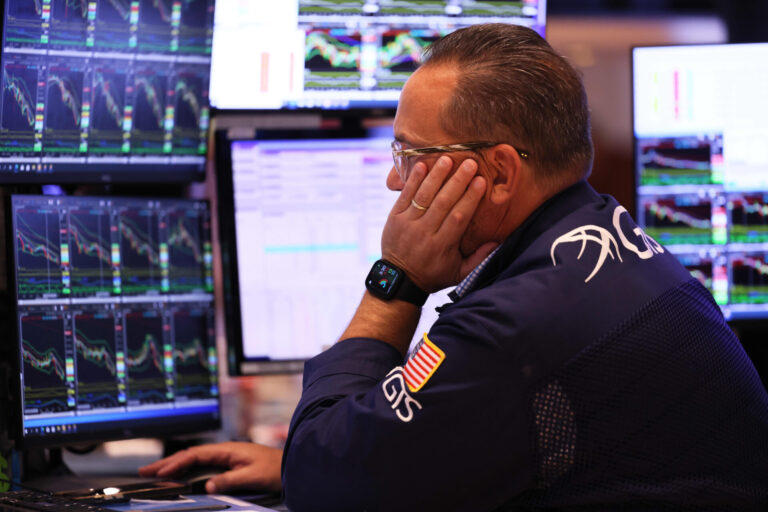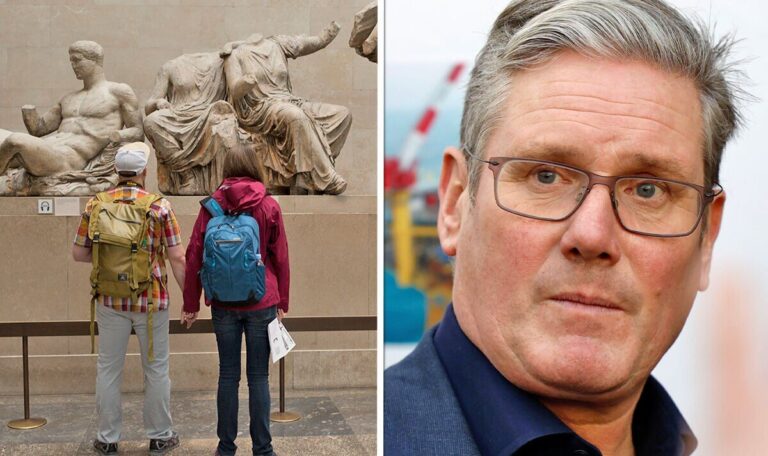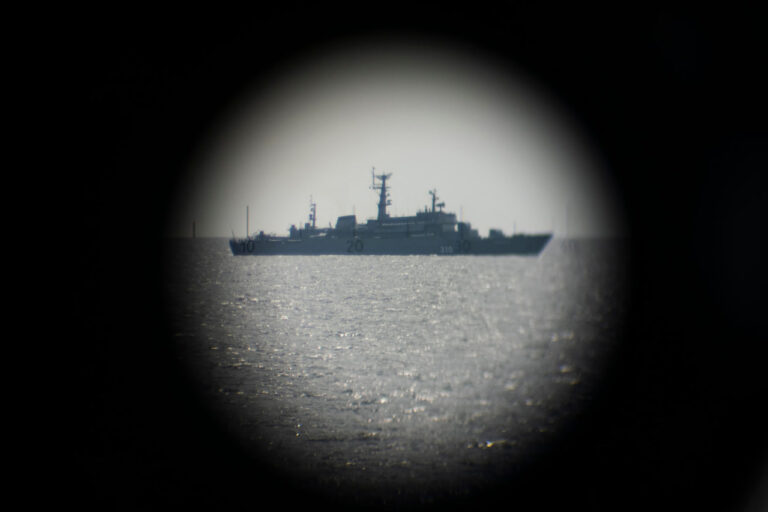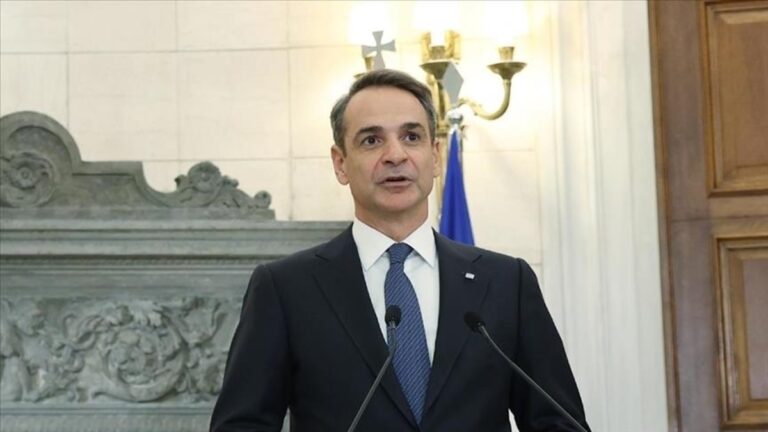This week the EU invited 16 leaders from the developing world to mark the first Global Gateway forum – Brussels’ answer to China’s Belt and Road Initiative, a massive project aimed at building infrastructure across the globe and gaining political influence.
The EU’s Global Gateway meeting came one week after China held its Belt and Road (BRI) forum in Beijing, coinciding with the BRI’s tenth anniversary.
Chinese President Xi Jinping launched the Belt and Road Initiative in 2013 during a visit to Kazakhstan.
Within a few years more than 120 countries signed up to the BRI. They were mostly Asian, African and Latin American states, but also EU countries such as Portugal, Luxemburg and G7 member Italy.
Tens of thousands of infrastructure projects were launched within the BRI framework, building on existing policies such as the “16+1 cooperation initiative” (between China and 16 central and eastern European countries) and Beijing’s earlier Zouchuqu (“Going Out”) policy, which saw overseas investments by Chinese companies.
Analysts estimate that Beijing extended more than $1 trillion in projects including railways, bridges, airports and ports through its finance arms, specifically the Export-Import (Exim) Bank of China, the China Development Bank (CDB) and the Beijing-led Asia Infrastructure Development Bank (AIDB.)
The rapid global expansion of the BRI meant that Beijing’s influence grew accordingly – to the dismay of many Western nations.
Persistent reporting about countries being unable to pay back China’s BRI-related loans generated bad press for Beijing, with China increasingly being accused of “debt diplomacy”.
In practice, it means that countries could be forced to pay back debts for decades or repay them in the form of concessions, granting China control over parts of the infrastructure or raw materials.
Enter the West
Competing initiatives were quickly launched such as Japan’s Free and Open Indo Pacific initiative, the Asia-Africa Growth Corridor, a joint project by India and Japan, Washington’s Build Back Better World partnership and now the EU’s Global Gateway.
The GG was launched in December 2021 and “aims at mobilising investments of up to 300 billion euros between 2021 and 2027… bringing together resources of the EU, member states, European financial institutions and national development finance institutions,” according to a commission document.
“It is explicitly and overtly designed to counter the Chinese Belt and Road Initiative,” Michael Dillon, a professor with the Lao China Center of King’s College of London, told RFI.
The GG is to “provide an alternative to what we could loosely refer to as developing countries, the Global South, who are being wooed by the by the Chinese”.
The GG and the Japan-India and US initiatives come at the time when the West and China are floating apart.
Since Xi Jinping’s second term as China’s President in 2018, relations between the US and China have soured, with the West issuing increasingly critical remarks on China’s treatment of its minorities (Uyghurs, Tibetans, Mongols), Beijing’s growing assertiveness in the South China Sea, its incursions into Taiwanese airspace and its harsh treatment of Hong Kong.
The EU said in a 2019 policy paper that it saw China as a “systemic rival” and since then the relationship went into a downward spiral, culminating in Brussels putting the massive EU-China Comprehensive Agreement on Investment (CAI) investment deal on hold in 2021.
Meanwhile, both the US and the EU have grown increasingly worried about China’s access to technology such as microchips. From its side, Beijing has imposed more restrictions on foreign businesses operating in China and reacted to Western sanctions with counter sanctions.
Decoupling?
In spite of a recent rapprochement, with an increased number of high-level visits from and to Beijing, the GG “seems to be part of decoupling” of the Chinese and EU economies, according to Dillon, “because it’s suggesting that it’s explicitly opposing the BRI”.
According to the EU, six core principles are at the heart of GG. Guiding the investments are democratic values and high standards, good governance and transparency, equal partnerships, green and clean, security and catalysing the private sector.
Dillon points out that the EU project does not to have the same values that China has. China’s projects notoriously lack transparency and do not necessarily adhere to “green” standards, although it claimed in 2021 that it would decarbonise BRI projects and stop investing in coal plants.
Interestingly, some prominent EU countries that previously flirted with the BRI, Portugal, Luxemburg and Italy, have moved away from their commitments and were represented during Europe’s GG meetings.
Among speakers at the closing ceremony on Thursday were Xavier Bettel, Prime Minister of Luxembourg, António Costa, Portugal’s PM and Antonio Tajani, the Deputy Prime Minister of Italy.
It is explicitly and overtly designed to counter the Chinese Belt and Road Initiative to provide an alternative to the Global South which is being wooed by the by the Chinese.
02:12
REMARKS by Michael Dillon, History Professor Lao China Institute, King’s College, London
Other countries may profit from both the Global Gateway and the Belt and Road. One of the keynote speakers in Brussels was President Sheikh Hasima of Bangladesh, a country that also received some $4.5 billion in Chinese investment in BRI projects.
Other countries that are featuring high on Beijing’s BRI agenda and that were represented at Brussel’s GG meeting include Vietnam, Tajikistan, North Macedonia, Albania, Serbia and Turkmenistan.
Africa, one of the biggest recipients of the BRI was represented in Brussels by Angola, Senegal, Ghana, Namibia, Mauritania, Egypt, Somalia and Rwanda.
Concretely, within the framework of the GG, the EU and Finnfund launched the Africa Connected Programme to mobilise more than €1 billion of sustainable investments in digital infrastructure.
The EU also signed an additional €500 million for a health partnership launched between the European Commission, the European Investment Bank (EIB) and the Bill and Melinda Gates Foundation and a further €134 million to increase local manufacturing and equitable access to affordable health products in six African countries.
Under the aegis of the GG, the US, also present at the forum, used the opportunity to sign deals as well, including a memory of understanding to help developing the Zambia-Lobito railway, that would connect the Atlantic and Indian Oceans.
Dillon sees the competition between the BRI and its western rivals as a replay of things past.
“You can see echoes of what happened in the 1960s when there was a conflict between China, Russia and the United States over influence in Africa,” he says.
“This is a sideshow … the BRI has been heavily criticised by a lot of western analysts but in many ways for the countries it has invested in it’s been relatively successful.”
The BRI’s flagship investment, the China-Pakistan Economic Corridor, provided China with a direct link to the Indian Ocean.
“Pakistani analysts argue that if it were not for the BRI, they would not have been able to develop the infrastructure projects.”
It remains to be seen if leaders behind Europe’s Global Gateway will have the same stamina to match the BRI’s global reach.
Source: rfi News







